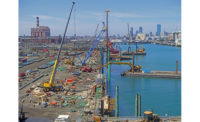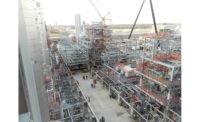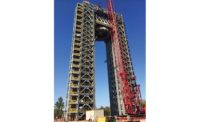Commercial Crew Transportation Capability – Launch Complex 41
Cape Canaveral Air Force Station, Fla.
Best Project
Owner: United Launch Alliance
Lead Design Firm: Nishkian Dean
Contractor: Hensel Phelps
Civil Engineer: Nelson Engineering
MEP Engineer: Fives Lund
Retrofitting Launch Complex 41 to support the U.S.’s next generation of manned spaceflight systems required some literal and figurative rocket science throughout the project. As the complex is regularly used for launching satellites and deep-space probes atop Atlas V rockets, constructing a 250-ft-tall crew access tower with 60-ft hydraulic egress arm immediately adjacent to the pad had to be scheduled and performed within a series of work windows. Each required specific, meticulous procedures for demobilizing and remobilizing workers and equipment, and ensuring that in-progress construction work was fully protected from the rocket’s 1.2 million lb of thrust. The coordinated planning paid off, with 17 successful, on-time launches conducted during nearly three years of construction.
The launch area’s mechanical, electrical, plumbing and fire protection systems underwent a full retrofit to accommodate the one-of-a-kind crew access tower (CAT), which has a “white room” for storage of astronauts’ gear and an environmental seal to control spaces that will surround the new CST-100 Starliner Capsule, scheduled to begin transporting astronauts to the International Space Station in 2019. With a 120.8-degree swing radius, the access arm will bring astronauts to within 10 in. of the capsule’s outer platform.
Hensel Phelps built an offsite test stand replicating the CAT to validate the arm’s hydraulic systems, function and constructibility in a controlled environment, unimpeded by the active launch schedule. After testing was complete, the arm was disassembled, transported to Cape Canaveral and lifted into place.
A variety of “space age” construction tools were used throughout the project, including 4D modeling analysis and BIM video editing to analyze and communicate potential prefabrication yard configurations and site access/logistics options as well as construction activities in sequence with scheduled launches. Laser scanning technology provided a quality verification tool during construction, ensuring full optimization of all work windows.
Related Article: Projects Shine With Construction Savvy





Post a comment to this article
Report Abusive Comment